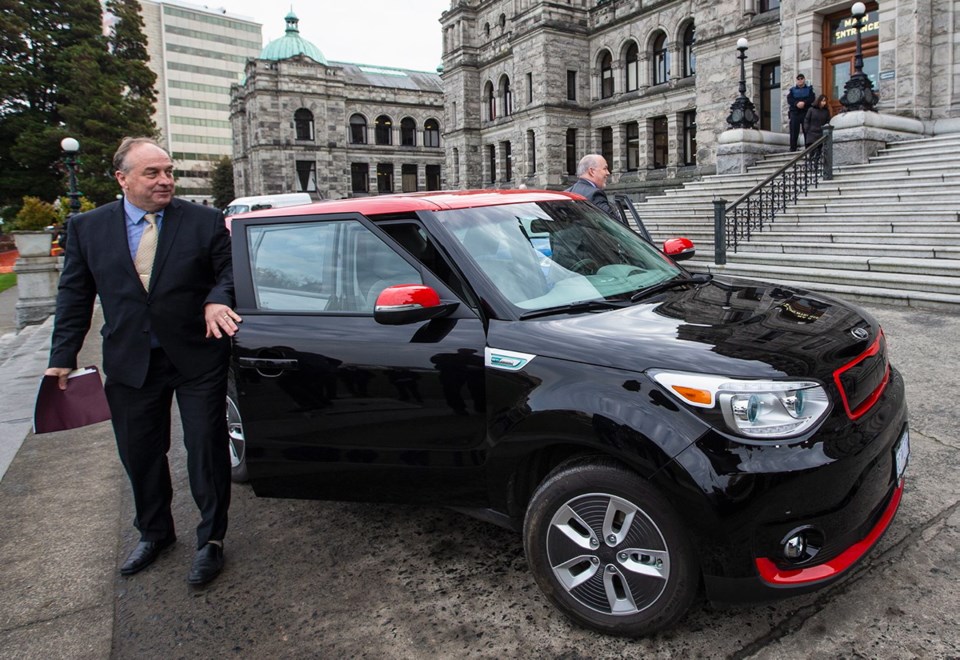All new light-duty cars and trucks sold in British Columbia must be zero-emission by 2040 under proposed legislation aimed at reducing air pollution.
The legislation is to be introduced in the spring. It will set sales targets for zero-emission vehicles, such as those fuelled by electricity or hydrogen.
By 2025, the target is 10 per cent; it’s 30 per cent by 2030 and 100 per cent by 2040, Premier John Horgan said at a press conference with Green Party Leader Andrew Weaver on Tuesday.
“These targets will only be achievable if British Columbians buy into them,” Horgan said.
Funding for an incentive program will rise to $57 million, an increase of $20 million. Designed to encourage drivers to buy clean-energy cars, the incentive program is administered by the New Car Dealers Association of B.C. and offers up to $5,000 when someone buys or leases an electric or hybrid-electric vehicle. Hydrogen fuel cell vehicle incentives can go up to $6,000.
B.C. is also aiming to expand the number of direct-current, fast-charger stations to 151 from the current 71 built or under construction, by leveraging federal and private-sector money.
A total of six public retail hydrogen fuel-charging stations will be installed by the end of 2020. Work starts this year on one station in Greater Victoria and two on the Lower Mainland.
Consumers need to get incentives to get into zero-emission vehicles, Horgan said.
Weaver, who drives an electric vehicle, said that 2040 may seem like a long time in the future, but it really represents one or two life cycles of vehicles. He said 40 per cent of household emissions come from transportation.
Zero-emission vehicles are quiet, clean, and can be zippy and fun to drive, Weaver said. “Once you get into a electric vehicle, you are never going to go back.”
B.C. has just over 1,500 public charging stations, the highest per capita rate in Canada. About 12,000 electric vehicles are on the road, the province said.
Chris Kennedy, chair of the University of Victoria’s civil engineering department, said it will probably take until about 2055 for all vehicles on the road to be zero-emission, given the life-span of vehicles. “Overall this is good. This is a great thing. It is about time,” Kennedy said.
The 10 per cent sales goal for 2025 is achievable and “pretty modest,” Kennedy said.
Blair Qualey, chief executive of the New Car Dealers Association of B.C., welcomed the new money for the incentive fund and new charging sites. “I’m glad to see government recognize that if we are going to ask people to purchase these vehicles, they need a place to charge them. It is sort of the biggest barrier to people buying electric vehicles.” They are anxious about the range of a vehicle’s battery and where they can be charged, he said.
As for the sales targets, Qualey said: “We’ve never been in favour of supply mandates. The issue is a demand one. It is not a supply one.”
“There are a lot of electric vehicles available for British Columbians to buy, that’s why the government has to keep topping up the incentive money because people are buying them.”
Merran Smith, executive director of Clean Energy Canada, a non-profit energy think-tank, said the announcement will make it easier for people to go electric. “If you want an electric car, you should be able to drive one home from the lot, same as any car — that’s what this policy is about.”
A Clean Energy report last month said demand is so high for electric vehicles that customers may have to wait to obtain one.



